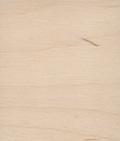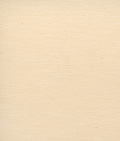|
|
|
|
Plywood
Plywood comes primarily in two varieties:
Birch Aircraft Plywood and
Poplar "lite" ply. A third variety is a type someplace in between lite ply and
aircraft ply. I believe it is called Obechi, but I'm not positive about
that.
Whatever it's called, many kits and especially ARF's come with this type of
plywood.
I really do not like that ARF manufacturers use soft plywood for firewalls.
When you start tightening down the bolts, you can actually see the engine mount
sinking into the wood.
Birch plywood is very hard and you can confidently bolt things to it
with a reasonable amount of torque without worrying about crushing it. I
buy 12" x 48" sheets in sizes from 1/64" to 1/4".
I have not found much use for lite ply. I know a lot of people like
to use it, but when I need plywood, it is usually for strength or to bolt
something else to. Lite ply will not hold a thread and is crushed by bolts. It is not strong enough for most load-bearing tasks either. Lite ply can be used in smaller models where aircraft ply would be used in
larger models.
Also see
|
|
|
|
Working with Plywood
 |
Birch Aircraft Plywood is a very high quality construction material.
It is denser and heavier than cheaper plywoods and the only type of plywood that
I generally use in my models.
It is typically used for firewalls, some formers, dihedral braces, and other
reinforcement tasks.
|
 |
Poplar Light Plywood is the antithesis of aircraft
plywood. It is cheap, very low quality, has poor
strength-to-weight and is generally useless to everyone but
manufacturers who want to put a kit together as cheaply as possible.
I don't use it because it is a sub-standard building material. Any
aircraft built with lite ply could have been built with balsa wood
instead.
Building with balsa will result in a lighter structure having a higher
strength-to-weight ratio.
|
Whenever I need a flat piece of plywood I
make my own. Store bought
plywood is always warped. Even if the rest of the structure can hold it in
place, you will not know for sure that it worked until you pull the structure from
the building board.
By then it is too late to do anything about it if
it did not work. Not to mention that I know the structure is already
straining and it is not even being pulled around by an engine yet.
Edge sanding plywood destroys sandpaper. There is not much you
can do about this other than to cut the part as close as possible to the
finished size to minimize sanding needed. |
|
|
|
Hardwood
Sitka spruce is often used for spars because it is stiff and strong,
yet can flex significantly without breaking. Unfortunately, spruce has
become very expensive and many manufacturers are now using basswood instead.
 |
Basswood is a fair replacement
for spruce, but spruce
is a better choice if you don't mind the price. Spruce is also used for longerons
on larger models with built up fuselages. |
Hardwoods are most commonly used for small mounting blocks (cowl bolts,
wing bolts, etc) and grooved landing gear blocks. It is also used to make
beam mounts in lieu of a bolt-on engine mount.
 |
Rock Maple used to be the standard for motor
mounts and was sometimes used for landing gear blocks, wing bolt blocks
and other miscellaneous pieces. I have not seen it advertised
for a while, so it may be endangered or just too expensive. |
Beech seems to be what is being used now. Unfortunately,
Beech tends to crush when bolting engines to it. Although I have not done
this yet, the next time I need beam mounts, I am going to try laminating plywood
together to get the thickness I want and see how I like it.
If I have the right size piece of hardwood handy, then I will use it for things
like servo mounts before I will use plywood. Plywood is designed to be used
in sheets, not strips. If you are making a beam mount for servos, then the
plywood has the disadvantage of the additional weight of the glue between
laminations, but no strength advantage over hardwood because half the grain
(every other lamination) is going in the wrong direction (the grain going across
the strip).
One of the most common uses of hardwood is birch dowels. These are
generally used to hold the leading edge of the wing in place while bolts secure
it at the trailing edge. Some models have wings held on with rubber bands.
On these models, there are two dowels that cross the fuselage to attach the
rubber bands after they are stretched over the wing. Dowels are sometimes
used for
pushrod material, but they are generally a poor choice as they are
heavy and prone to warping.
|
|
|
|
Plywood and Hardwood Sources
I buy birch aircraft plywood in 12" x 48" sheets from
Balsa USA. Sig
Manufacturing also carries aircraft plywood of good quality.
Because I have a small table saw, I buy 3/4" square beech motor mount stock from Balsa
USA and rip it to whatever size I need. I normally use hardwood for rails
and other small mounting blocks.
I use Sitka Spruce when I want stronger wing spars. I
don't use basswood even though it is considered to be an acceptable substitute.
Basswood is inferior to spruce, but less expensive and more available.
Unfortunately spruce has gotten more expensive and harder to find. I
have ordered spruce from
Aircraft
Spruce and Specialty. The wood quality was excellent, but the sawing
left something to be desired. The cutting tolerances are fairly loose.
Specifically, I ordered 1/8" x 1/4" cap strips (for full size aircraft).
The finished pieces varied up to 1/32" smaller or larger on the 1/8" cut and up
to 1/16" larger on the 1/4" cut. In other words, I had pieces that ranged
from 3/32" x 5/16" to 5/32" x 3/16". They were all supposed to be 1/8" x
1/4".
Again, my table saw comes to rescue so that I can have the sizes I need, but
it's still annoying. In fact, I would have found the sizes completely
unacceptable had I not been able to resaw the wood.
Unfortunately, I don't know of another source of spruce or I would try
someone else before ordering from Aircraft Spruce again. |
|
|
|
|
|
|
|
Back to
Construction Materials
Airfield Models Home |
|
|
|
Copyright © 2002 Paul K.
Johnson |
|
|
![]()